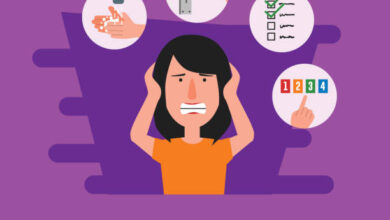Understanding Bipolar Disorder: A Comprehensive Overview
Understanding Bipolar Disorder: A Comprehensive Overview

Bipolar disorder, previously referred to as manic-depressive illness, is a mental health condition marked by intense fluctuations in mood, encompassing heightened emotional states (mania or hypomania) and periods of low mood (depression). The shifts in mood can be severe, impacting daily activities, relationships, and job performance. Despite its challenges, with proper management and support, individuals with bipolar disorder can lead fulfilling lives.
What is Bipolar Disorder?
bipolar disorder is a mental health condition characterized by significant mood swings that include periods of intense emotional highs (mania or hypomania) and lows (depression). These mood episodes are more severe than the typical fluctuations that people commonly experience, impacting the individual’s behavior, energy levels, and ability to function in daily life. There are several types of bipolar disorder, including Bipolar I, Bipolar II, and Cyclothymic Disorder, each with its specific patterns of mood alterations. The condition requires a clinical diagnosis and is managed through a combination of medication, psychotherapy, and lifestyle adjustments. Despite its challenges, with proper treatment and support, individuals with bipolar disorder can lead fulfilling lives.

bipolar disorder types
Bipolar I Disorder
This type is characterized by manic episodes lasting at least seven days or by manic symptoms so severe that immediate hospital care is needed. Episodes of depression also occur, usually persisting for a minimum of two weeks.
Bipolar II Disorder
Individuals with Bipolar II experience a pattern of depressive episodes and hypomanic episodes (less severe than full-blown manic episodes) but don’t have the full-blown manic episodes that characterize Bipolar I.
Cyclothymic Disorder
Also known as cyclothymia, this type involves periods of hypomanic symptoms and periods of depressive symptoms lasting for at least two years (one year in children and adolescents); however, The symptoms fail to satisfy the diagnostic criteria for a hypomanic episode and a depressive episode.
bipolar disorder symptoms
bipolar disorder signs vary depending on the mood phase the individual is experiencing.
Manic/Hypomanic Episode
- Elevated or irritable mood
- Increased energy, activity, and agitation
- Exaggerated sense of well-being and self-confidence (euphoria)
- Decreased need for sleep
- Unusual talkativeness
- Racing thoughts
- Distractibility
-
Impaired judgment, such as engaging in excessive shopping, taking uncalculated sexual risks, or making imprudent financial investments.
Depressive Episode
- Depressed mood, feeling sad, empty, hopeless, or tearful
- Diminished interest or lack of pleasure in virtually all activities.
Unexpected loss or gain of weight, or changes in appetite, even without intentional dieting. - Insomnia or sleeping too much
- Restlessness or slowed behavior
- Fatigue or loss of energy
- Feeling like you’re not good enough or experiencing excessive or inappropriate guilt
- Having trouble focusing or making decisions, or feeling like your thinking ability is reduced
- Thoughts of death or suicide, or suicide attempt
The severity of mood episodes can vary among individuals with bipolar disorder, and symptoms can impact various aspects of life, including relationships, job or school performance, and daily functioning.

Treatment and Management
The treatment and management of bipolar disorder are multifaceted, involving a combination of medications, psychotherapy, lifestyle changes, and support, aimed at controlling the symptoms and improving the quality of life for the individual. Here’s an overview of the key components in the treatment and management of bipolar disorder:
bipolar disorder medication
- Mood Stabilizers: These are the cornerstone of bipolar disorder treatment. Lithium, valproate, lamotrigine, and carbamazepine are common mood stabilizers used to control manic or hypomanic episodes.
- Antipsychotics: If symptoms of depression or mania persist despite treatment with other medications, antipsychotic drugs might be added. These can include olanzapine, aripiprazole, quetiapine, and others.
- Antidepressants: These are sometimes used to manage depressive episodes, but they are typically prescribed along with a mood stabilizer or antipsychotic to prevent triggering a manic episode.
Psychotherapy
- Cognitive Behavioral Therapy (CBT): Helps individuals recognize and change harmful patterns of thinking and behavior.
- Family-Focused Therapy: Involves family members and focuses on enhancing family coping strategies, communication, and problem-solving.
- Psychoeducation: Teaches individuals about bipolar disorder and its treatment to help them recognize signs of relapse, enhancing adherence to treatment.
- Interpersonal and Social Rhythm Therapy (IPSRT): Focuses on stabilizing daily rhythms such as sleeping, eating, and activity schedules, which can help manage mood swings.
Lifestyle and Home Remedies
- Routine: Establishing a daily routine can help control mood swings.
- Sleep: It’s really important to stick to a regular sleep routine.
- Exercise: Regular physical activity can help manage depressive symptoms and improve overall health.
- Healthy Diet: A balanced diet can contribute to overall well-being.
- Avoiding Triggers: Recognizing and avoiding triggers that can provoke mood swings is important.
Coping and Support
- Education: Learning about it can help individuals and their loved ones understand the condition and anticipate challenges.
- Support Groups: Joining a support group can provide a network of assistance and understanding from people with similar experiences.
- Stress Management: Techniques such as mindfulness, meditation, or yoga can help manage stress.

Monitoring
- Regular follow-ups with mental health professionals are essential to monitor the effectiveness of the treatment plan, make adjustments to medications, and provide ongoing support and intervention as necessary.
Effective treatment and management of it require a comprehensive approach tailored to the individual’s needs. Ongoing communication with healthcare providers, a strong support network, and a commitment to follow the treatment plan are crucial to managing the disorder effectively.
Conclusion
It is a challenging condition, but with the right treatment and strategies, individuals can manage their symptoms and lead productive, fulfilling lives. Understanding the disorder, seeking proper care, and developing a robust support network are crucial steps in navigating the complexities of bipolar disorder. If you or someone you know is struggling with symptoms of bipolar disorder, it’s essential to seek professional help to get the necessary support and treatment.





